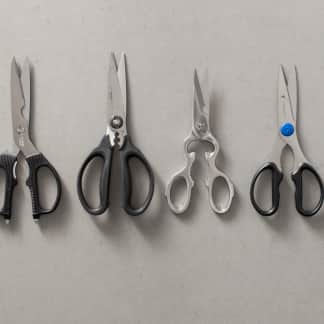Fresh herbs add a jolt of flavor to your cooking, and growing them yourself means they’re as fresh as possible. Indoor gardens promise to make it easy to harvest herbs, lettuce, and other types of small produce at home, even if you lack outdoor space or sunlight. We tested four models priced from $189.99 to $199.95, all equipped with full-spectrum grow lights that mimic daylight and more or less self-watering systems. Three were “smart” gardens with apps that cycled the lights on and off and sent alerts to help us monitor and care for the plants. We bought two of each garden, setting up one set in a windowless room and the other in a room with windows but away from direct light.
Setup For Some Wasn’t Simple
Getting the gardens going took varying amounts of effort. The worst model, from Edn, came with a single packet of basil seeds, 10 pods of moistened soil, and detailed instructions for planting a specific number of the minuscule seeds at ¼-inch depth; we found the guidelines for adding water and the included nutrients to the water tank confusing and contradictory (water overflowed), and we struggled to pair the garden to its app and interpret the flashing-lights communication system on the container. It was frustrating and difficult to tell whether we’d succeeded.


Easier to start but requiring larger-scale, more hands-on gardening was the model by SunBlaster. This was simply a big, deep rectangular tray with grow lights installed in a hood above it. Four long rectangular seedling containers sit on a platform in the tray, with a fabric mat beneath them that helps plants wick up moisture from the tray, which you fill with water. You must separately buy seeds and a 10-pound bag of potting soil. As the seedlings grow, you raise the height of the hood. There is no app or automatic aspect to this garden: You must either switch the lights on and off manually or install a timer to do so. We used an internet-connected “smart” plug as a timer, setting the lights on a 12-hour cycle.
The final two models, by Miracle-Gro and Click and Grow, came with six and nine preloaded seed capsules, respectively. Setting up the Miracle-Gro and pairing it with its app was a multistep process that required juggling parts and adding water to the proper level in the black tank. We also had to decide on our preferred light cycle without much guidance. Once all that was arranged, it was a matter of pushing little pods into the slots according to the plant heights marked on the pods (short, medium, and tall, with tall in the rear) and covering them with plastic domes, which you remove once plants grow. A display on the front of the unit tells the time and the number of days since the plants were started and gives reminders to add water and nutrients on a schedule; the app also sends reminders to your phone. You must raise the light deck as the plants grow, starting it quite low over the plant pods.

The winning indoor garden, by Click and Grow, sprouts basil, mini tomatoes, and lettuce in this time-lapse video taken over two months. The sprouts appeared within a week and grew quickly.
That brought us to the easiest garden to set up, by Click and Grow. The Smart Garden 9 truly lived up to its name. The soil pods for basil, mini tomatoes, and lettuce each came with seeds already planted, nutrients built in (no fussy bottles, as in the Miracle-Gro and Edn systems), and QR codes on the top of the container that the app reads to automatically set the appropriate light cycle for your plants. You pop the pods into the slots in the garden, cover them with plastic domes until the seedlings sprout, and pour water into the enclosed tank until a bobber rises to the surface of the tank (indicating that it’s full), and you’re done. The tall archway of grow lights over the garden is not movable, but it doesn’t need to be adjusted as plants grow. Seedlings appeared quickly and grew to full size in weeks, and the process was mostly hands-off. The system didn’t require as much watering as other gardens in the lineup, possibly because the water tank was fully enclosed. The warm glow of the lights was pleasant, and the garden, although tall, sat flush against the wall on our counter.
Some Gardens Thrived Without Sunlight
For four and a half months, we monitored and cared for all the gardens. We saw no major differences in the performance of the gardens planted in a windowless room versus in a room with indirect sunlight. We did see stark contrasts in the success of the four models, though. We were never able to harvest plants from two of them; the Edn didn’t produce enough herbs, and the SunBlaster’s plants sprouted but didn’t grow big enough. The Edn garden was our biggest failure, with one of the two sets growing just a single basil seedling; the other grew a few more, but in only half the pods we’d planted. The other two models, by Click and Grow and Miracle-Gro, yielded large quantities of herbs and lettuce. Both of these gardens offer many types of seeds, including edible and inedible flowers, and would be good choices, but the Click and Grow system was far more self‑sustaining and simpler to operate. It’s our top choice if you want to grow fresh herbs and produce at home to enhance your recipes.
- Simple and intuitive to set up
- No special gardening knowledge required
- Hearty plants grow quickly and continue to produce usable quantities
- Mostly hands-off operation, with little intervention required over time
- App offers helpful advice, making it easier to care for the garden
- Set up and plant two of each garden, leaving one in complete darkness and the other in indirect light
- Follow care and feeding instructions for more than four and a half months
- Harvest and sample the produce












